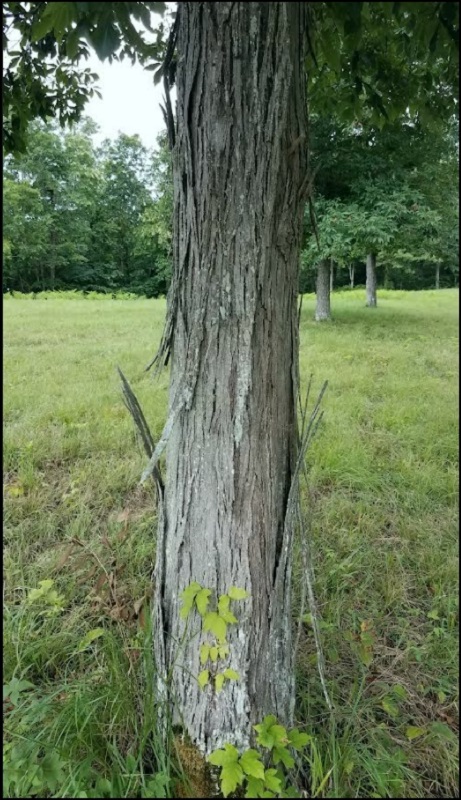@wdingus - thanks for that UT AG document link, very nice.
@blueberry and @Lucky_P ---- all you Hickory experts… well this is a little disappointing…
NOTE - I have not made it back over to my mother in laws house yet to check her tree and nuts out anymore… should be able to do that on Friday evening…
But I did get out and check a couple of my own hickory trees and found this out…
Don’t count on the Bark appearance to tell for sure what kind of Hickory you have.
Check this out… now this is what I assumed was a Shagbark Hickory… in my field.
Again, never really checked out the nuts or leaves that close.

Note on this tree the majority of the leaf clusters have 5 leaves.
Just looking at that tree and the bark, you would think Shagbark… or I did at least.
Until I got my ladder out there and took a close look at a couple nuts…
If I am correct that is the classic (tear drop) shape of the pignut - Right ?
But pignut are supposed to have the smoother bark, but hey mine is shaggy…
Oh well… pretty sure that one is a pignut looking at the nuts. Agree ?
I may harvest some and try them out this fall anyway, I hear pignut can be bitter.
Now just down the field a bit, I have another hickory… and below is what it looks like (bark/trunk wise).
It is a little shaggy… I was hoping it was a shagbark too…

Note on this tree the majority of the leaf clusters have 7… they are noticeably larger leaves, somewhat glossy.
And below a somewhat distant and upclose pic of the limb tip and nut.
It is a different nut for sure… looking at that document that wdingus provided… possibly a red hickory ?
I will have to try some of them this fall too and see how they taste.
What do you think on these two trees ? Pignut & Red Hickory ? or someting else ?
Edit, add a bit later… I looked at that document again and this is what it says about the Red Hickory…
Red Hickory (Carya ovalis [Wangenh.] Sarg.)
Red hickory is common throughout Tennessee, usually on
dry, well-drained upland ridges and slopes and is found
alongside Pignut hickory. Sometimes it is referred to as
sweet pignut because its nut is sweet, while that of pignut is
typically bitter.
Leaflets mostly 7 (sometimes 5), glabrous leaflets and petiole, petiole
at base of rachis often reddish; fruit round, with thin husk (<0.13 inch);
sutures splitting to base of nut; bark ridges somewhat scaly.
…
That bit of red tint at the base of the leaf stem… and everything else they say… seems right.
Thanks
TNHunter

















